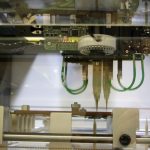For electronic devices used in medical facilities, there is no room for electromagnetic interference (EMI). It doesn’t matter whether the EMI is from natural sources or artificial; the resulting disturbances can lead to serious system failure, loss of essential data, or even death.
EMI is an important topic for designers and manufacturers so that they can counter interference. Designing medical devices without due consideration of this challenge can mean components that are not protected.
What are the Causes of EMI?
Electromagnetic interference emanates from a source, has a transmission path, and involves a response. Unwanted currents or voltages negatively affect the performance of an electrical component or electronic system.
Stray electromagnetic fields can emanate from natural sources such as lightning and cosmic. Communication gadgets, HVAC devices, vehicle traffic, and radio signals are typical artificial sources.
The Reality of EMI in Medical Devices
Doctor’s office, home settings, and hospital environments come with all variations. Despite this, Everyone appreciates this fact, from the government to medical equipment manufacturers.
The modern market for medical devices places immense value on products that are smaller, lighter, and more compact. However, conventional challenges of EMI persist, yet designers are on the spot to provide solutions. X-ray equipment, life support machines, electrical devices in surgical wards, and patient telemetry machines are prominent sources of interference.
Best practices for prevention and reduction of EMI in medical devices
Filtering
When connected to a circuit or device, an EMI filter suppresses electromagnetic noise. It specifically extracts unwanted current from cables but allows desirable current to continue passing.
The working of an EMI filter is based on the fact that the majority of electromagnetic interference operates at a higher frequency range. The filter allows lower frequencies to pass while blocking higher frequencies.
Grounding
According to the American National Standards Institute (ANSI), grounding refers to the connection of an electric circuit or equipment to earth or to some conducting body of a relatively large extent that serves in place of the earth.
For grounding strategy to work best for medical devices, some best practices applied are:
- Keep grounds for digital and analog circuits separate- connect them later using a single point if necessary
- If a ground plate is large, apply multiple grounding points
- Minimize inductance by separating internal circuits and leads, and shortening components to ground
- If there is no other way to control ground loop voltages, isolate circuits
Shielding
Medical devices can also counter EMI through isolation, whereby a conductive barrier covers the electrical circuit. The ideal shield is a continuous and sufficiently thick box. Shielding is typically necessary for handling radiated energies.
Design Phase Relevance
Equipment and component designers should adhere to relevant legal requirements that address EMI. The IEC 60601-1-2 series of standards generally governs the design phase of medical electronics. There are several other standards that the item design may need to adhere to, including the ANSI C63.27. Since commercial or consumer electronic devices in the medical setting are not subject to the IEC 60601-1-2 standard, medical administrators are urged to be proactive when managing the EMI risk.
MADES can offer assistance if you need to have more control of your device design. We have years of experience designing devices using different EMI techniques. Every project starts with an understanding of the client’s needs. This leads to an evaluation of the requirements needed for adherence to the IEC 60601. Eventually, we deliver a manufacturing scheme.





